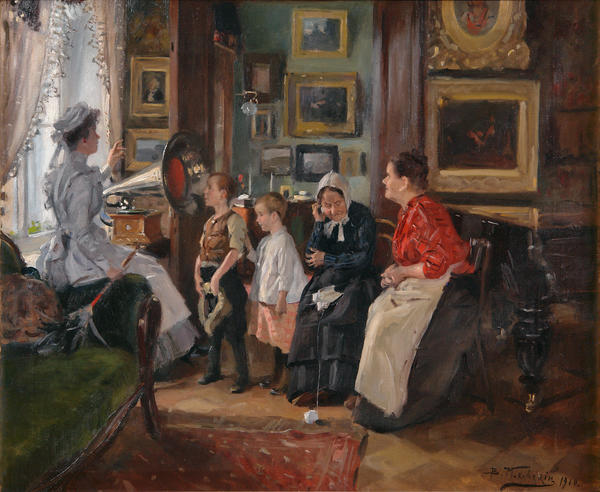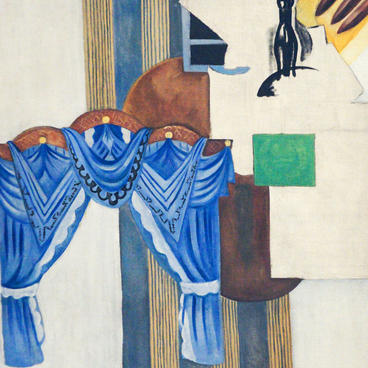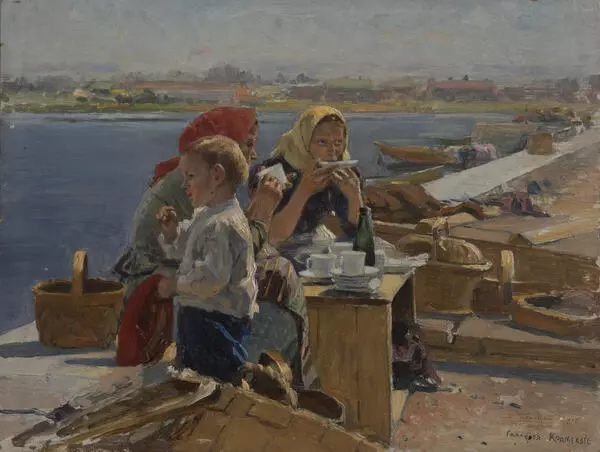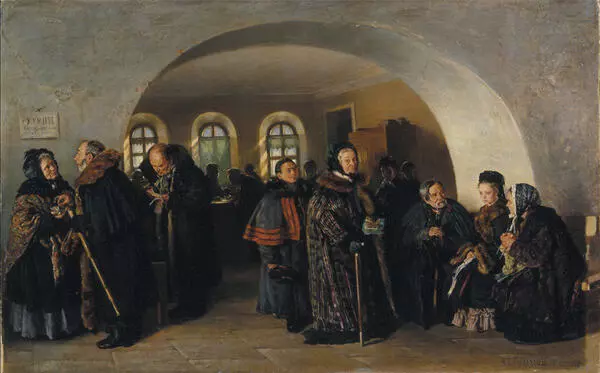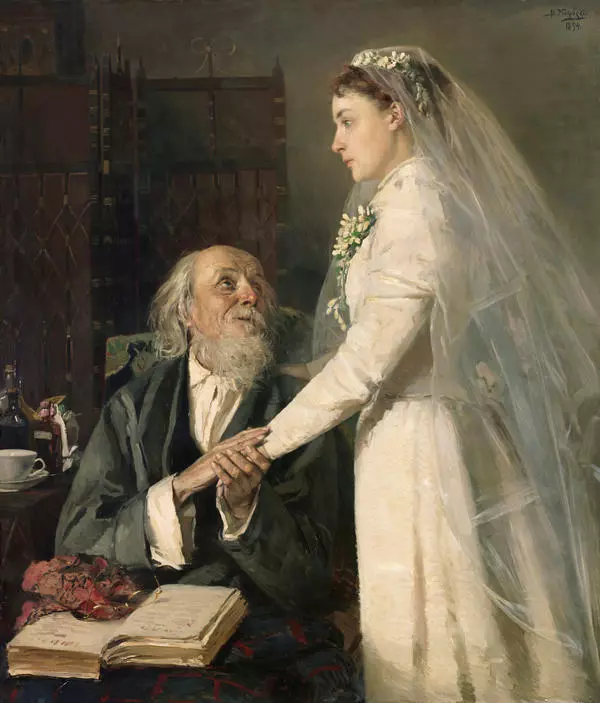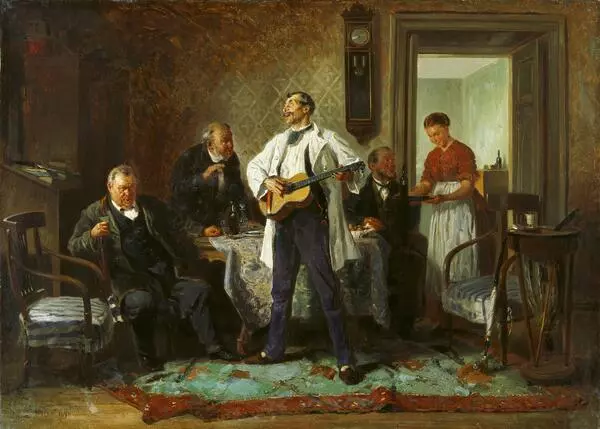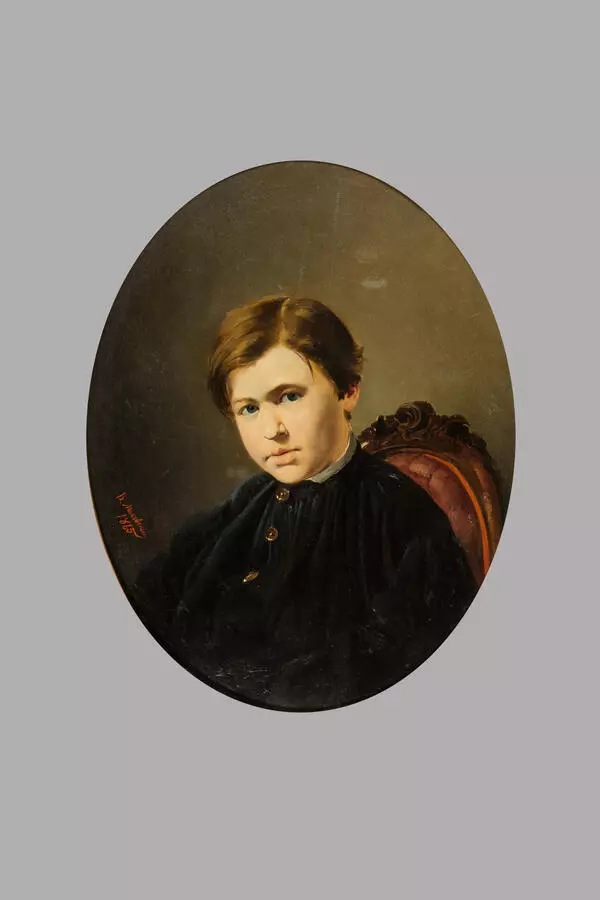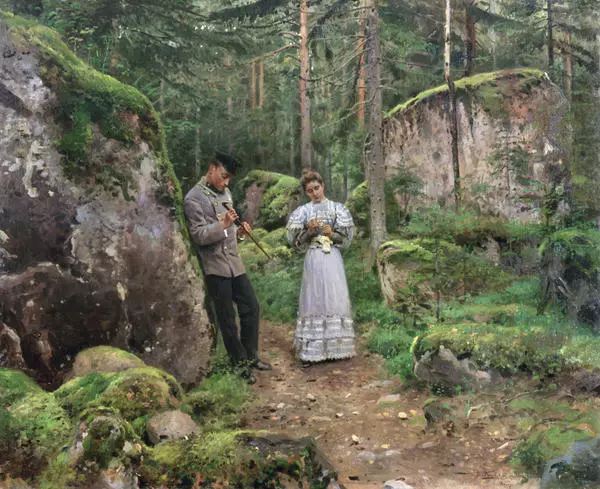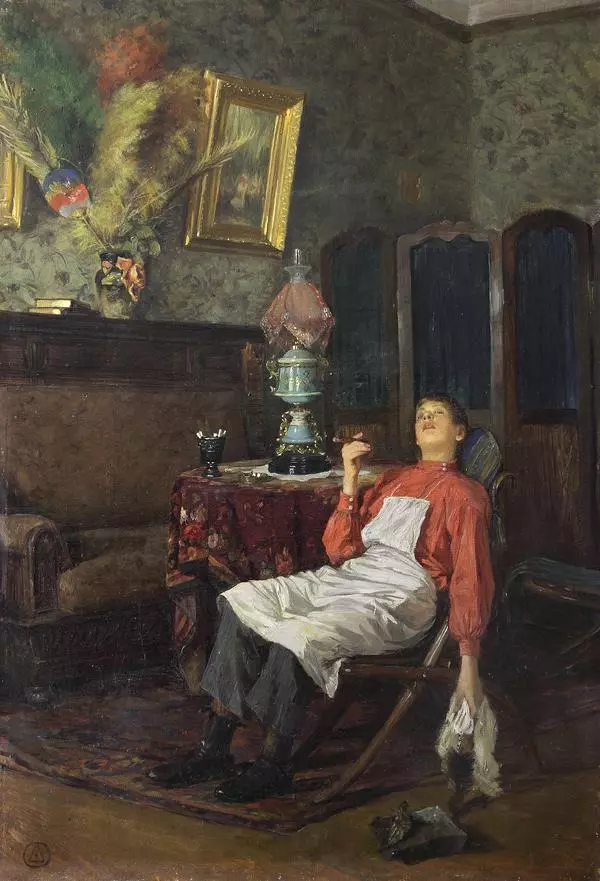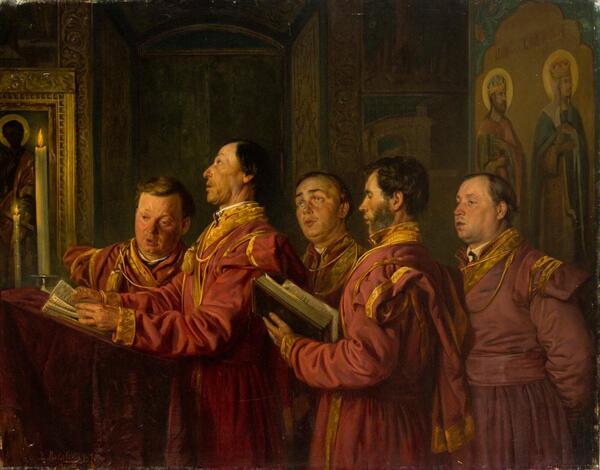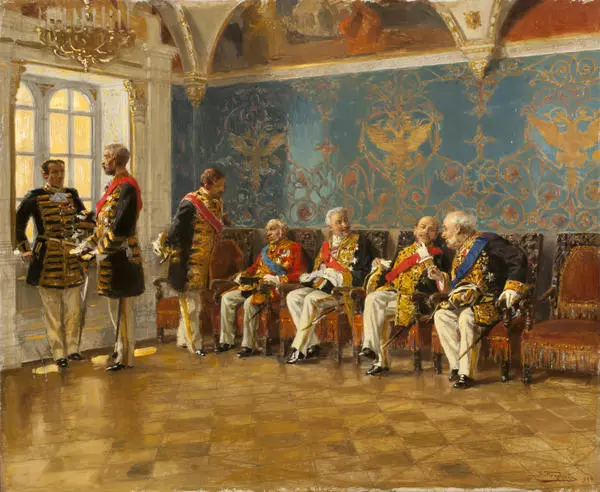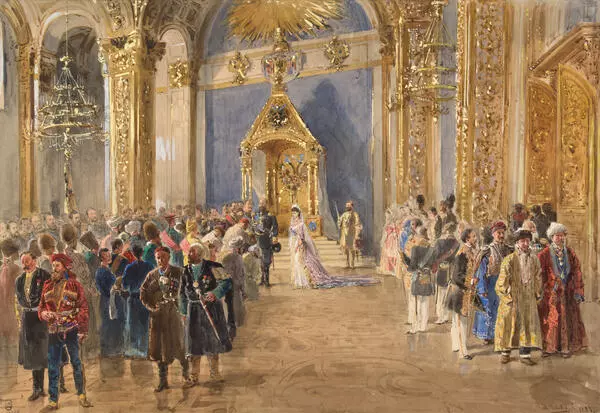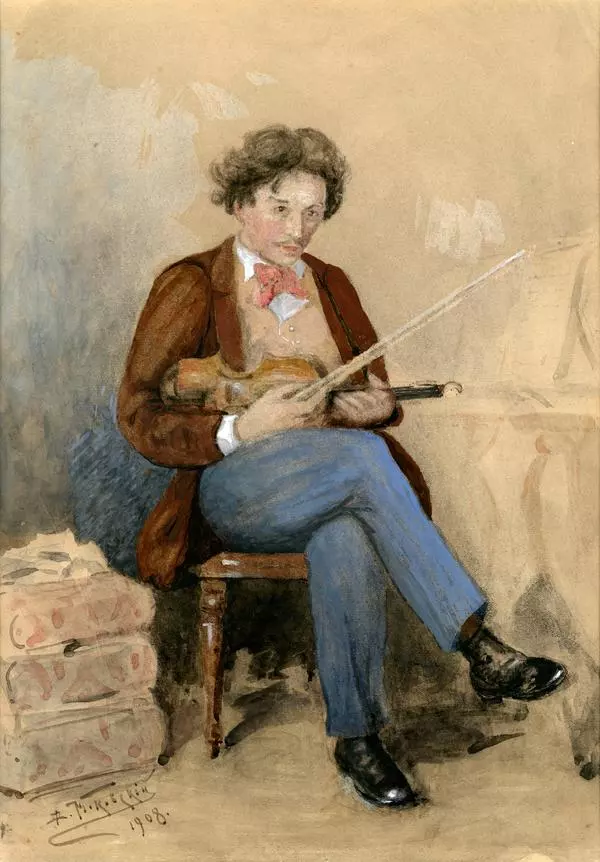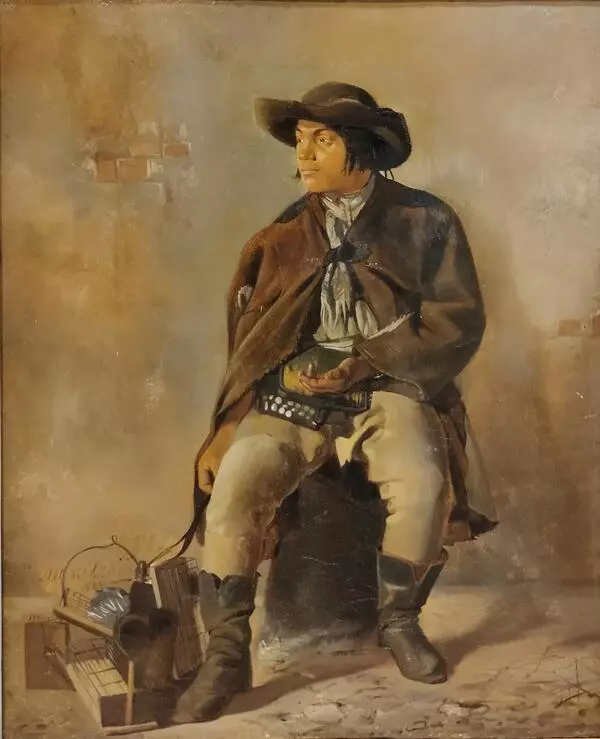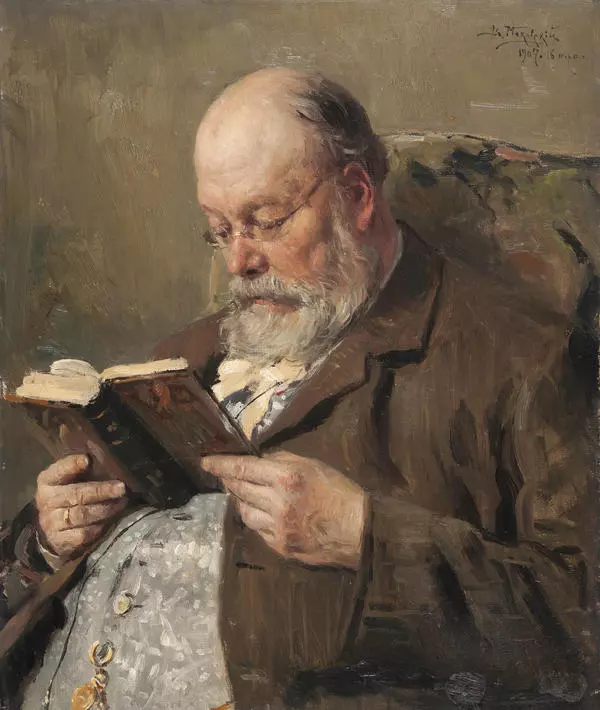Vladimir Makovsky was born in Moscow in 1846. His father, Yegor Makovsky, was a painter and collector, a founder of the Moscow School of Painting, Sculpture, and Architecture; his mother, Lyubov Molengauer had a wonderful voice and worked as a professor at the Moscow Conservatoire. All the five children of the family made an artistic career: Vladimir, Nikolai, Konstantin, and Alexandra became painters, and Maria an actress.
The Makovskies were a hospitable and genial family, receiving numerous guests, among them prominent artists, musicians, writers, and actors. They knew Mikhail Glinka, Nikolai Gogol, Alexander Pushkin, Karl Bryullov, and many others. The artistic atmosphere made a deep effect on the future painter.
In 1861, Vladimir Makovsky entered the Moscow School of Painting, Sculpture, and Architecture, where he was a student under Professors Sergei Zaryanko and Yevgraf Sorokin. When he graduated, Makovsky received a silver medal awarded and the title of a Certified Artist, 3rd Grade, for his picture Reading.
Playing at Dibs was Makovsky’s first picture purchased by Pavel Tretyakov for his gallery. It meant he was recognized as an established artist. In 1870, Vladimir Makovsky co-initiated the Society for Travelling Art Exhibitions, the Itinerants, and became its full member in 1872.
Vladimir Makovsky was one of the most consistent Itinerants: throughout his life, he painted genre pictures dedicated to common people rather than celebrities. Nikolai Alexandrov, an art critic, wrote about him: “He visits all almshouses and asylums, where they are beginning to call him “Your Excellency”. He knows all the boondocks of Moscow, all the backwoods. He can be encountered in marketplaces, popular festivals, at all flea markets, and, at the same time, at balls, in theatres, concerts, masquerades, and on boulevards.’
Makovsky depicted the joys and sorrows of ‘common people’ with sincere depth and affection. He chose for his subjects both real human life dramas and common everyday episodes. Every story described by his pictures was full of vitality, truth, and recognizability.
Everyday life was the painter’s favourite theme. Vladimir Makovsky’s subjects had an important literary feature: looking at them, one can easily visualize both the episode in the picture and what preceded or followed it.
Listening to the Gramophone, which is on permanent display at the Museum, depicts an everyday life episode, too. While her master is away, the sprightful housemaid is starting a gramophone for an old and thick nurse, cook, and two children. The artist fills the picture with good humour. The author’s concept is conveyed through specific attitudes and body language of the characters.
Vladimir Makovsky died in Petrograd in 1920. In his lifetime, he made over 400 paintings, numerous pictures illustrating works of classical Russian literature, hundreds of etchings, engravings, water colours, and drawings.
The Makovskies were a hospitable and genial family, receiving numerous guests, among them prominent artists, musicians, writers, and actors. They knew Mikhail Glinka, Nikolai Gogol, Alexander Pushkin, Karl Bryullov, and many others. The artistic atmosphere made a deep effect on the future painter.
In 1861, Vladimir Makovsky entered the Moscow School of Painting, Sculpture, and Architecture, where he was a student under Professors Sergei Zaryanko and Yevgraf Sorokin. When he graduated, Makovsky received a silver medal awarded and the title of a Certified Artist, 3rd Grade, for his picture Reading.
Playing at Dibs was Makovsky’s first picture purchased by Pavel Tretyakov for his gallery. It meant he was recognized as an established artist. In 1870, Vladimir Makovsky co-initiated the Society for Travelling Art Exhibitions, the Itinerants, and became its full member in 1872.
Vladimir Makovsky was one of the most consistent Itinerants: throughout his life, he painted genre pictures dedicated to common people rather than celebrities. Nikolai Alexandrov, an art critic, wrote about him: “He visits all almshouses and asylums, where they are beginning to call him “Your Excellency”. He knows all the boondocks of Moscow, all the backwoods. He can be encountered in marketplaces, popular festivals, at all flea markets, and, at the same time, at balls, in theatres, concerts, masquerades, and on boulevards.’
Makovsky depicted the joys and sorrows of ‘common people’ with sincere depth and affection. He chose for his subjects both real human life dramas and common everyday episodes. Every story described by his pictures was full of vitality, truth, and recognizability.
Everyday life was the painter’s favourite theme. Vladimir Makovsky’s subjects had an important literary feature: looking at them, one can easily visualize both the episode in the picture and what preceded or followed it.
Listening to the Gramophone, which is on permanent display at the Museum, depicts an everyday life episode, too. While her master is away, the sprightful housemaid is starting a gramophone for an old and thick nurse, cook, and two children. The artist fills the picture with good humour. The author’s concept is conveyed through specific attitudes and body language of the characters.
Vladimir Makovsky died in Petrograd in 1920. In his lifetime, he made over 400 paintings, numerous pictures illustrating works of classical Russian literature, hundreds of etchings, engravings, water colours, and drawings.

